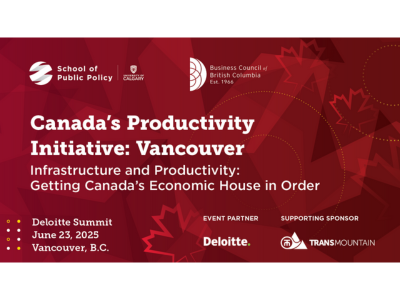In search of a Canadian Energy Strategy—Minister’s Carr’s Mission Impossible?
The first ‘to do’ item in the ministerial mandate letter—the ‘job jar’ for Canada’s Energy Minister, James Carr, is,
Work closely with provinces and territories to: develop a Canadian Energy Strategy to protect Canada’s energy security; encourage energy conservation; and bring cleaner, renewable energy onto a smarter electricity grid.[1]
Based on the evidence of past sorties into this minefield since the fifties has he been given a ‘Mission Impossible’?
Regardless, duty calls. Earlier this year, the Minister launched Generation Energy – “a discussion…with Canadians about how we make, move and use energy in our energy future”. The goal is to “ensure that the decisions made about how we produce and use energy over the course of the next generation reflect the core values and perspectives of Canadians”. The dialogue seeks to answer some fundamental questions:
- What does Canada’s energy future look like over the long-term?
- What generational goals should we strive to achieve?
- What values should guide us?
- What are the pathways and guideposts along the way?
After a major gathering this past fall of national and international energy pundits in the Minister’s hometown, Winnipeg, his officials will issue a report expected next year. It may or may not be ominous that at the end of the discussions, the Minister confirmed that there will not be a plan or strategy but rather the government’s ultimate goal is to create an “on-going and open dialogue with Canadians about energy as we move together into the future”. [2]
The mandate letter makes odd references to antiquated concepts such as energy ‘conservation’, rather than efficiency, and while the obligatory genuflection to renewable energy is to be expected, the objective of a ‘smarter electricity grid’ seems to have played to Mr. Carr’s bias. For he is known to have a passion for a pan-Canadian power grid, an utterly uneconomic notion that goes back to Prime Minister John Diefenbaker and resurrected a year ago as something that his colleague, Catherine McKenna, the Environment and Climate Change minister declared could be financed by a Canada infrastructure bank, to promote clean energy and combat climate change.
Formulating a Canadian Energy Strategy is a daunting challenge. We try it every decade or so. And we always fail. ‘National Fuel Policy’ in the 1870s urged subsidizing Cape Breton coal’s access to Upper Canada, and in the 1920s, Alberta coal to Ontario to back out U.S. coal—both seen as ‘nation-building’ energy strategies. In the 1960s the National Oil Policy’s goal was to seek access to U.S. markets for Alberta’s burgeoning oil production; national energy policy supported the development of CANDU nuclear reactors to power central Canada’s industrial engine. In the 1970s, “sources of energy (were) known to be finite” (one of many, past peak oil panics) and there was “Grave concern…about the effect on the natural environment of present methods of acquiring, transporting and using energy sources”, prompted “An Energy Policy for Canada” (1973). [3] The energy polices of the seventies sought made-in-Canada oil prices not OPEC cartel-determined oil prices, to have a national oil company and subsidize Canadian ownership of the oil industry and promote energy self-sufficiency through terminating oil and gas exports, providing subsidies for energy ‘conservation’ and promotion of coal.
Over the years Ottawa has produced numerous projections of Canada’s energy future, notably in 1957 (“Canadian Energy Prospects” for the Royal Commission on Canada’s Economic Prospects), in 1973 (“An Energy Policy for Canada”) and 1976 (“An Energy Strategy for Canada: Policies for Self-Reliance”). Perhaps the most detailed and confident were the projections in “Energy Futures for Canadians” in 1978. Post-deregulation after the National Energy Program and its quick revision, the “NEP Update” of 1982, the government hedged its projections by putting out ‘scenarios’. [4]
Mr. Carr recently declared that “It’s been a very long time—and no one can actually remember when—since Canadians came together to talk about their future energy mix.”[5] Well, some might actually remember 1987 when Prime Minister Mulroney’s energy minister, Marcel Masse, launched “Energy Options—A Canadian Dialogue” to seek a “…willingness to coalesce for mutual support for (an energy policy that) reflects our sense of self and our collective vision of the nation.”[6] Canadians indeed came together. All of the themes and much of the same verbiage in Generation Energy informed these past sorties in search of this Holy Grail of Canadian economic policy, except one—climate change induced by rising CO2 concentrations. In fact, it came up just as the Energy Options dialogue was being finalized in 1988—that epochal, record hot summer that launched the Intergovernmental Panel on Climate Change[7]. The subject was hastily added to the Options report. But the bedrock post-liberalization energy policy of the Mulroney government endured for three decades—Canada’s longest living energy policy. It was simple: reliance on open markets, respect for provincial jurisdiction and intervene for health, safety and environmental reasons as necessary. Environmental reasons—climate change—has created the basis for intervention.
From the 1990s climate change has been the surrogate for energy strategy. Over the last seventy years energy and environment issues have evolved from local, to regional and trans-boundary to global. Meanwhile, those seeking recognition and even preeminence in the debate have gradually pixelated from the nation state down to the sub-national, city, group and even the individual. Squaring global issues that require global responses with the demands of individuals to be heard on these issues confounds any attempt at a reasonable discourse let alone developing a coherent and dynamic strategic framework that would function within Canada’s constitutional context for its economically critical and particular energy system.
Each attempt in the past to develop an energy policy or strategy was triggered by a crisis, real or perceived. The current Homeric search for a strategy started in 2003 when the energy industry was concerned that government would make ill-informed decisions to meet Canada’s impossible and cynical commitment under the Kyoto Protocol. Compounding the panic, governments and energy agencies like the IEA, academics and industry all believed that North America was running out of natural gas—the bridge fuel in many climate strategies. Forty some LNG import proposals for the continent’s coastlines proliferated. We only need to imagine what we would face today had Ottawa reacted to this crisis with policies that ‘picked this winner’—LNG imports. We now have almost as many proposals to export LNG.
The outcome of Minister Carr’s gathering in Winnipeg might be predictable. All the usual suspects for a strategy will be listed in his department’s forthcoming report. Indeed, a visit to the NRCan website[8] reveals that the various pieces of climate and natural resource policies and plans appear to be conflating into an energy framework or plan. The Energy Ministers’ 2016 Joint Action Plan for First Ministers identified four priority areas in their collective commitments:
- Energy Efficiency: aligning standards, updating building codes, and facilitating adoption of energy management systems for industry
- Energy Infrastructure: exploring new and enhanced electricity interconnections, smart electricity grids, natural gas infrastructure, and improved regulatory review processes
- Energy Technology and Innovation: expanding RD&D cooperation and investment and reducing reliance on diesel in remote communities
- International Energy Collaboration: deepening collaboration on international energy issues, including joint missions.
This Action Plan supports the Pan-Canadian Framework on Clean Growth and Climate Change (PCF). The plan picks up on most of the elements advocated by industry, ENGOs and First Nations, including carbon pricing, R&D, adaptation and building resilience to climate change. So, most of what might be expected in an energy strategy seems to be in place.
But generalities are not what ‘interest groups’ want. ENGOs, the various and numerous energy industry associations, academics and activists want to see specifics. Variously, these ‘specifics’ include support for non-fossil fuel energy sources, termination of tax credits for fossil fuels, no more pipelines of any kind, aggressive closure of coal plants—to name a few. Perhaps some of these voices would not support something critical to developing energy/climate policies; Energy literacy.
Forty years ago last month, U.S. President Jimmy Carter signed an Executive Order that would make the Energy Information Administration (EIA) independent from the energy department. The EIA’s energy statistics gathering and data analysis have become the gold standard for energy analysts. Canadian policy analysts often have to rely on the EIA for data on Canada’s energy sectors. Some energy superpower. Canada needs to catch up if we are to properly measure and monitor the gearing of energy in our economy and in the roll-out of the PCF.
To paraphrase Lord Kelvin, ‘If you measure nothing, you know nothing’. All too often the energy dialogue in Canada is not grounded in verifiable data. Anyone can claim anything. Data are scattered among federal, provincial and industry agencies, institutions and associations. If Minister Carr wants to return from his Mission Impossible with something substantive, a clear and lasting legacy for his stewardship of the energy portfolio, he should seek his government’s approval and support for a Canadian Energy Information Organization. Then, eventually we can have that “on-going and open dialogue with Canadians about energy”—an informed dialogue, grounded in the facts, not wishful thinking and selected anecdotes by clever tweets on social media.
[1] Rt. Hon. Justin Trudeau, P.C., M.P. Prime Minister of Canada “Minister of Natural Resources Mandate Letter” http://pm.gc.ca/eng/minister-natural-resources-mandate-letter
[3] Canada, Minister of Energy, Mines and Resources (1973) “An energy policy for Canada”, 3 vols (Ottawa)
[4] Davis, J. (1957). Canadian energy prospects (No. 13). “Royal Commission on Canada’s Economic Prospects.”
Canada, Minister of Energy, Mines and Resources (1973) “An energy policy for Canada”, 3 vols (Ottawa)
Energy, Mines and Resources Canada (1976). “An energy strategy for Canada: Policies for self-reliance.”
Canada, Minister of Supplies and Services (1978) “Energy Futures for Canadians”
Canada, Minister of Energy, Mines and Resources (1982) “The National Energy Program Update”
[5] National Post “’A plan for the future of Canada’s energy:’ Jim Carr’s ambitious search for consensus” (October 3rd, 2017) http://business.financialpost.com/commodities/energy/a-plan-for-the-future-of-canadas-energy-jim-carrs-ambitious-search-for-consensus
[6] Canada, Minister of Energy, Mines and Resources (1987) “Energy Options—A Canadian Dialogue”
[7] Yergin, D (2011) The Quest, p 458 The Penguin Press NY
[8] http://www.nrcan.gc.ca/plans-performance-reports/dp/2017-18/19249


